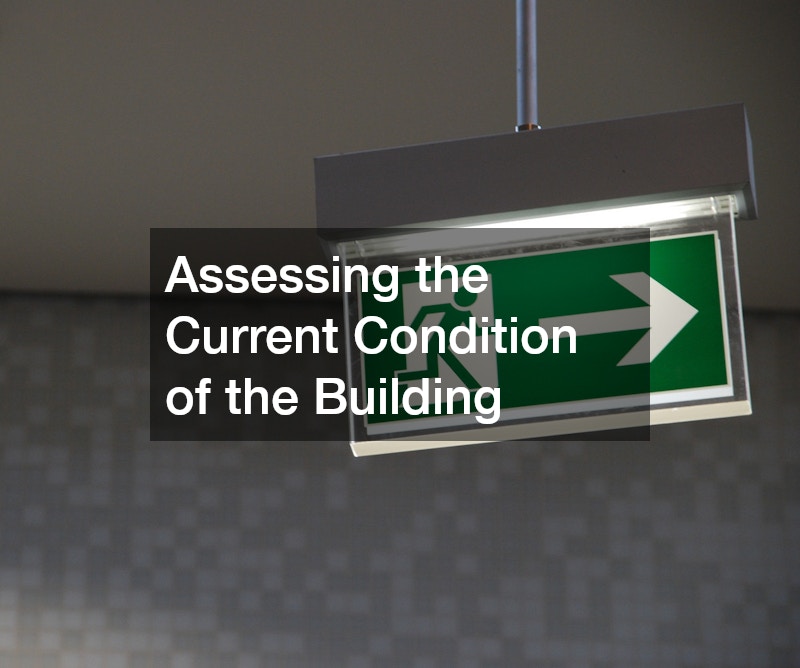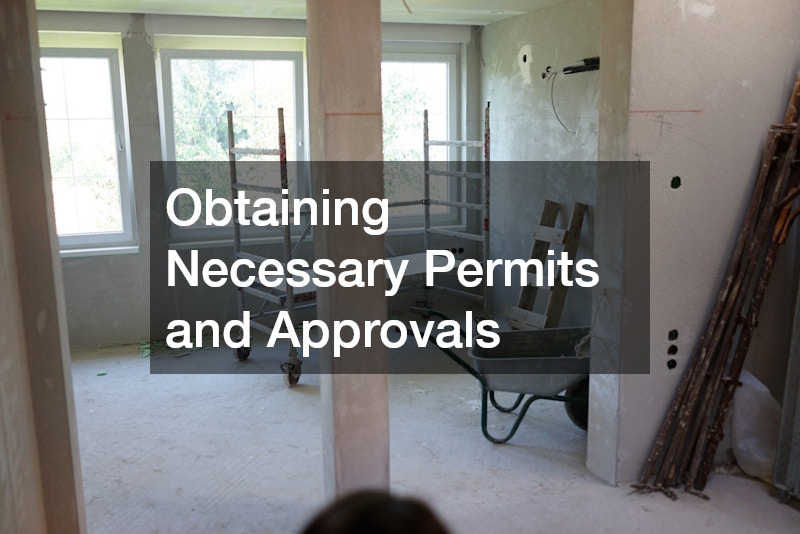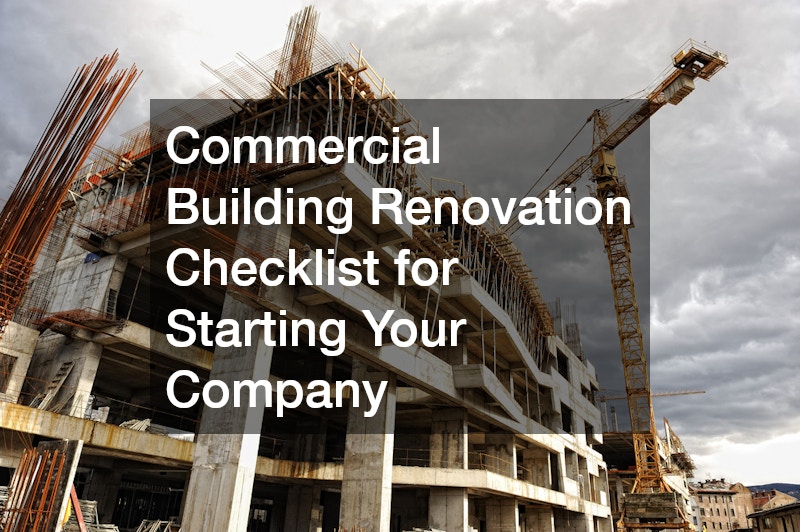Disclaimer: What Liberty Ate. This site provides food and drink content for informational purposes only.
Introduction
Starting a commercial building renovation can be an overwhelming task, but it is essential for creating a functional, efficient, and appealing business space. Whether you’re revamping an outdated facility or adapting a building to meet modern needs, having a detailed commercial building renovation checklist helps you manage the process effectively. From understanding the initial condition of the property to finalizing permits, budgets, and hiring contractors, each step plays a crucial role in ensuring that the renovation goes smoothly and remains within your budget. By planning carefully and taking the time to address every aspect of the project, you can create a space that not only meets your business’s operational needs but also enhances its long-term growth and appeal.
A well-structured commercial building renovation checklist is your guide through the complexities of the renovation process, ensuring that every critical step is accounted for. Assessing the current condition of the building and establishing a budget are the first two key steps that can significantly affect how the renovation unfolds. These initial phases help you understand what needs to be done and how much it will cost, giving you a clear framework to move forward. In addition, obtaining the necessary permits and approvals is vital to ensure that the renovation complies with local laws and building codes. With proper planning and attention to detail, your commercial building renovation can transform your business’s premises into a safe, modern, and highly functional space.
Assessing the Current Condition of the Building

Before embarking on any renovation project, it’s essential to thoroughly assess the current condition of the building. This first step ensures that you have a comprehensive understanding of the structure’s existing state, including any issues that may require attention. Inspections should cover everything from the foundation and walls to electrical systems, plumbing, and HVAC units. By identifying any potential problems early on, you can avoid unexpected delays and budget overruns later in the renovation process. Additionally, a proper assessment helps in prioritizing which parts of the renovation need more focus, ensuring that you meet both safety standards and business needs.
Specifically, engaging an asphalt professional during this assessment can help you evaluate the condition of your building’s external surfaces, such as parking lots and driveways. These areas are often overlooked but are crucial for customer accessibility and the overall appearance of the property. Cracked or damaged asphalt can create hazards for vehicles and pedestrians alike. By addressing these issues early in the renovation, you not only enhance safety but also improve the curb appeal of your building. An asphalt professional can ensure that these surfaces are properly maintained, paving the way for a successful commercial building renovation checklist that covers all aspects of the property.
Establishing a Renovation Budget
Once the building’s condition has been assessed, the next critical step in your commercial building renovation checklist is establishing a renovation budget. A well-thought-out budget is crucial for keeping your project on track and avoiding financial setbacks. The budget should account for all costs, including materials, labor, permits, and potential unexpected expenses. By estimating these costs early on, you can make informed decisions about where to allocate your resources and ensure that the project stays within your financial means. Having a clear and detailed budget also makes it easier to adjust plans if necessary, ensuring that your renovation remains on course without sacrificing essential elements.
When creating your budget, consider the importance of incorporating cutting edge technologies or materials that can enhance the functionality and energy efficiency of your building. For example, investing in innovative systems or modern design elements may have a higher upfront cost but can lead to long-term savings on energy and maintenance. While these cutting edge upgrades might seem like additional expenses, they can ultimately reduce operational costs and improve the overall value of your building. By including room in your budget for these enhancements, you ensure that your renovation aligns with both current industry standards and the goals of your commercial building renovation checklist.
Obtaining Necessary Permits and Approvals

A critical part of any commercial building renovation checklist is obtaining the necessary permits and approvals. Without these, your renovation may face legal challenges, hefty fines, or even work stoppages, which could severely disrupt your timeline and budget. Each city, county, or state has its own set of building codes and regulations that you must follow, covering everything from structural changes to fire safety standards. Navigating the bureaucracy can be time-consuming, so it’s essential to start this process as early as possible. Gathering all the correct permits ensures that your renovation complies with local regulations and protects your business from potential legal complications.
For instance, when installing new features like a metal snap roofing service, it’s important to ensure that the work meets local building codes. Roofing often requires specific permits due to the structural implications it has on the building’s overall safety. Working with licensed professionals who are familiar with the permitting process can make this part of your renovation much smoother. By prioritizing permits and approvals early in your project, you can avoid unnecessary delays and ensure that your building is legally compliant, keeping your commercial building renovation checklist on track.
Planning for Safety and Accessibility Compliance
Safety and accessibility should be at the forefront of any commercial building renovation checklist. Every renovation must prioritize the health and safety of both employees and visitors, which means adhering to OSHA guidelines and other relevant safety standards. Ensuring that your building complies with these regulations not only protects your business from legal liabilities but also creates a safer environment for everyone. This includes making sure that exits are properly marked, fire safety systems are up to date, and that accessibility features like ramps or elevators are installed where necessary. Compliance with the Americans with Disabilities Act (ADA) is also critical, as it ensures your building can accommodate individuals with disabilities.
Incorporating fall protection systems during the renovation can significantly improve the safety of workers, especially if your project involves roof work or other high-risk activities. These systems help to prevent accidents and injuries, which are not only devastating but can also halt construction. Fall protection systems should be in place before any work begins, ensuring that workers are safe and the renovation can proceed without unnecessary risks. By focusing on safety and accessibility compliance from the start, you can avoid potential fines and create a welcoming, secure environment that aligns with your commercial building renovation checklist.
Choosing Energy-Efficient Upgrades

One of the most beneficial aspects of a renovation is the opportunity to make energy-efficient upgrades. These upgrades can lower your operating costs, reduce your environmental footprint, and improve the overall performance of your building. By replacing outdated systems with modern, energy-efficient alternatives, you can save on utility bills and create a more sustainable business model. Some popular upgrades include energy-efficient windows, LED lighting, and high-performance insulation. These enhancements not only make your building more comfortable but also increase its value and appeal to environmentally conscious consumers.
If your building relies on older appliances, consider partnering with appliance repair services to evaluate their efficiency. Rather than completely replacing some units, repairing and upgrading them could be a cost-effective solution. For example, fixing an HVAC system or commercial kitchen appliances can reduce energy consumption and prolong the lifespan of your equipment. This step ensures that your renovation focuses on sustainability, helping your building meet modern standards of energy efficiency. Incorporating energy-efficient upgrades into your commercial building renovation checklist can significantly impact both your business operations and your bottom line.
Selecting the Right Contractors for the Job
Choosing the right contractors is a crucial step in ensuring your renovation is completed efficiently and up to standard. The success of your commercial building renovation checklist largely depends on the expertise and reliability of the contractors you hire. From general contractors to specialized professionals, it’s essential to vet each company thoroughly, ensuring they have a solid track record, proper licenses, and insurance coverage. Clear communication, reliable scheduling, and a proven ability to handle projects of your scale are also vital factors in selecting the best team. Opting for experienced contractors will help you avoid potential pitfalls and delays during the renovation process.
For instance, if your renovation involves upgrading HVAC systems, you might need specialists for VRF system installation. These contractors will ensure the advanced HVAC system is installed correctly, offering improved efficiency and zoned climate control throughout the building. Choosing experts for such tasks ensures that your project remains on schedule and that every aspect of the renovation is completed to the highest standards. Properly vetting contractors who understand the complexity of your renovation needs will ultimately lead to a smoother process and a successful outcome.
Upgrading Plumbing and Electrical Systems

Upgrading plumbing and electrical systems is often a necessary component of a commercial building renovation checklist, especially in older buildings. Outdated systems can lead to inefficiencies, costly repairs, and even potential safety hazards. Modernizing these systems not only improves the functionality of the building but also helps it meet current building codes and safety regulations. Whether it’s installing new wiring to support the latest technology or replacing old pipes to improve water pressure, these upgrades are essential to ensuring that your building operates smoothly and efficiently.
For example, if you’re also upgrading entry systems, rolling doors might be a valuable addition to streamline movement in and out of your building. These doors offer durability and ease of use, making them ideal for businesses that require frequent access to large openings, such as warehouses or distribution centers. Addressing both plumbing and electrical upgrades, along with any structural modifications like rolling doors, helps create a more efficient and functional building that meets modern standards.
Enhancing the Building’s Exterior and Curb Appeal
The exterior of your building is the first thing clients, customers, or tenants will see, so it’s important that it reflects the quality of your business. Enhancing the building’s curb appeal is an essential part of your commercial building renovation checklist, as it can attract more foot traffic and improve the overall perception of your property. Simple updates like fresh paint, modern signage, or landscaping can dramatically improve the look of your building. If your budget allows, consider more significant renovations like replacing outdated exterior materials or adding new architectural features that align with contemporary design trends.
If your building’s exterior also requires functional improvements, an air conditioner installer could play a key role in updating outdated cooling systems. Installing modern air conditioning units or central air systems can increase the comfort level inside the building, making it more appealing to visitors and employees alike. This exterior enhancement not only improves the visual appeal of your building but also ensures that it is comfortable and functional for everyone using the space. Focusing on both aesthetics and practicality in your renovation helps boost your building’s attractiveness and operational value.
Creating a Functional Interior Layout
A functional interior layout is one of the most critical aspects of a commercial building renovation checklist. The flow of the space, ease of access, and the arrangement of rooms all contribute to how efficiently a business can operate within the building. When planning the interior layout, it’s essential to consider how employees, customers, or tenants will move through the space. This involves creating clear pathways, ensuring sufficient space for equipment or workstations, and designing rooms or areas that enhance productivity and comfort. The goal is to ensure that the layout supports the needs of the business and makes the building as practical as possible.
As part of maintaining a clean and functional interior, hiring a commercial pressure washing service can be a key step in the renovation process. Pressure washing can remove built-up dirt, grime, and stains from interior floors and walls, leaving the space looking fresh and revitalized. This service is especially important in areas that receive heavy foot traffic or have been exposed to industrial materials. It’s a simple yet effective way to improve both the cleanliness and the overall aesthetic of your building’s interior during renovation.
Scheduling Inspections and Final Approvals
After completing your renovation, it’s essential to schedule inspections and obtain final approvals before opening the building for use. This step ensures that all renovations meet safety standards and are compliant with local building codes. Inspections may cover everything from structural integrity to plumbing, electrical systems, and fire safety. Getting the proper sign-offs from inspectors is crucial in avoiding potential legal issues and ensuring that your building is safe for occupancy. This final step in your commercial building renovation checklist confirms that every aspect of your renovation has been completed according to plan and is ready for official approval.
For example, if your renovation included the installation of new flooring, such as epoxy flooring services, an inspector will check the durability and safety of the flooring. Epoxy flooring is popular for commercial spaces because of its strength and resistance to wear and tear. It’s important that this, along with all other updates, meets industry standards and passes inspection. By scheduling these final inspections and securing approvals, you can confidently move forward with your business plans, knowing your building is fully compliant.
Conclusion
A successful commercial building renovation requires careful planning, thoughtful decision-making, and attention to detail. From assessing the current state of your building to enhancing curb appeal, each step in the renovation process plays a vital role in ensuring that your property is functional, efficient, and visually appealing. Whether it’s upgrading plumbing and electrical systems, creating a functional interior layout, or securing final inspections, following a comprehensive commercial building renovation checklist ensures that all critical aspects are addressed. In addition to structural and aesthetic improvements, selecting the right contractors and materials will also contribute to the long-term success of the renovation.
Ultimately, a well-executed renovation can significantly improve the value and functionality of your building, making it more attractive to tenants, customers, or clients. By focusing on both the big-picture goals and the finer details, you can transform your commercial space into a modern, efficient environment that supports your business’s growth.

